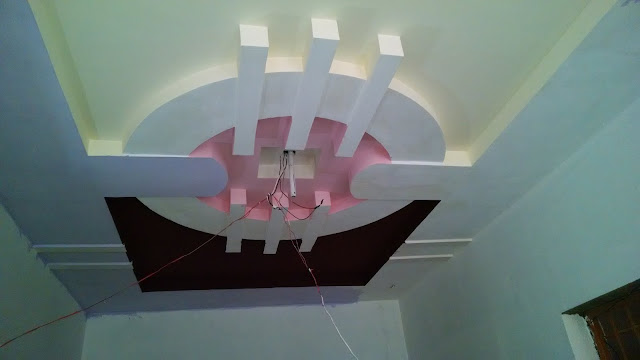What do you need?'
Cellulose sponge, dishwasher, painter's tape, base, paint, paint tray, paint roller, two-inch paint brush, ladder

Take these steps
1.Purify the walls
Using a big sponge of cellulose and a water solution combined with a few drops of gentle dishwashing liquid, clean your walls to remove any dust, dirt, and fat.
2.Adjust the trim
Use the blue painter paper (not masking tape) to protect any fields that your paint doesn't want to get on, such as trimming, molding, door knobs, window screens, and door panels: run lengthy tape rows just inside the exterior corners of those areas.
3.Pour the first in a cabinet
Pour in enough to nearly fill the well down the table without filling the pointed part of the table where the pads are.
4.Roll the first on the screen
Dip your stick into the primer, roll it back and forth a couple of occasions across the sheets of the tray to remove any surplus and avoid dripping. Make sure that the wheel is covered uniformly. Run a segment of the ceiling up and down the sheet, adding the primer until the part is completely coated. Continue until your wall is completely covered, reapplying the primer as needed to the roller.
Tip: Follow the cleaning directions of the manufacturer, which you will discover on the can, to ensure that the base is totally intact before implementing the paint.
5.The texture is painted
Dip a two-inch bent pen into the paint, only about a fifth of the manner down the pen to cover the bristles. Run the comb along the tape's exterior rim spanning the seam (on the tape's ceiling hand; not the bottom part). Continue to apply paint gently against your attached strip, work it out from the ribbon for about two or three inches. Continue to paint a tight swathe along all the labeled fields until you've completed.
6.Roll on paint in the form of a "w"
Fill a paint cabinet with paint; insert your handle and remove surplus. Roll the color 3-by-3-foot "w" form onto the ceiling. Working your route home across that "w," plug in vacant spots without raising the plate until that ceiling portion is fully coated. Continue to add more paint as required to the bin until the entire ceiling has been covered.
7.Remove the file from the painter
Peel off the paper while the paint is still moist to prevent any dissolved paint along with it from being inadvertently removed.














